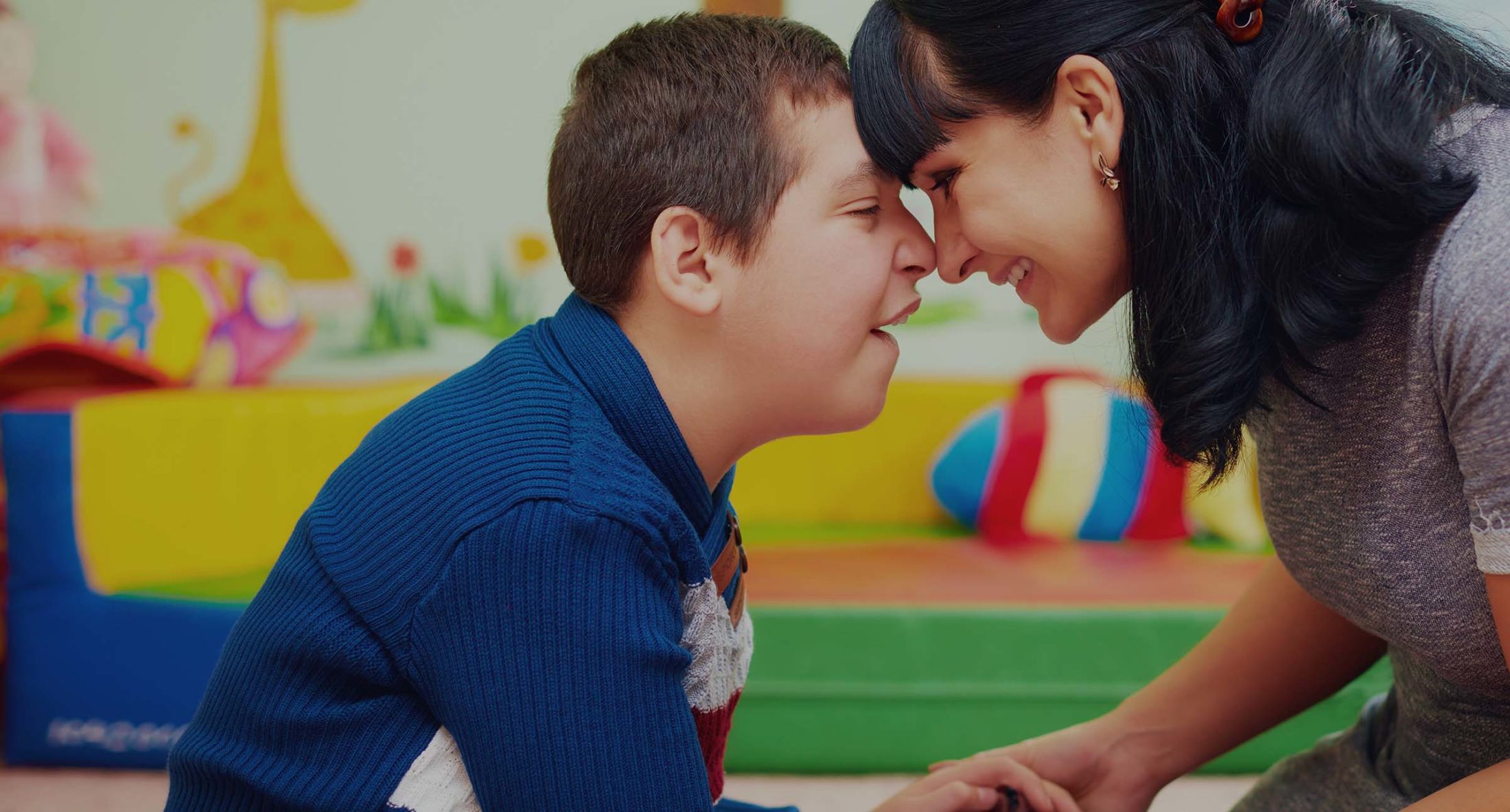

We’re here for you when your child experiences Global Developmental Delay.
Though compensation can’t change what’s happened, it can provide you and your child with life-long security.
Call for a free consultation on whether you have a claim
Helping you find answers for Global Developmental Delay.
We have years of experience. We build teams around families. And we always have your back.
As your child grows they usually acquire new skills at a similar age to their peers. These ‘developmental milestones’ are often divided into specific areas. A child has Global Developmental Delay when they are not reaching their milestones in two of more areas of development.
Global Developmental Delay may become apparent in motor skills, cognition, social and emotional development, and communication.
-
Motor developmental delay
If your child has motor developmental delay they may struggle with gross motor skills such as rolling, crawling or walking. Or they may struggle with fine motor skills like being able to pincer a marble between a finger and a thumb or tie up a shoelace.
By the time your child is one year old, they should be able to crawl or stand when supported. By the age of two years, they should be able to walk.
-
Cognitive developmental delay
Cognition involves the ability to think, understand and follow instructions.
When your child has reached their first birthday they should be able to point at objects. By the time of their second birthday, they should know what common objects are used for, i.e. a telephone.
-
Social & emotional developmental delay
A child with social and emotional developmental delay may experience difficulties interacting with others.
By the time a child is three months old they should be able to smile and by six months they should laugh. By the age of one year, a child should be able to interact by waving when being waved to.
-
Communication developmental delay
Many children struggle with speech and language which includes the ability to talk, listen and receive information.
By four months a child should babble and respond to loud noises. By one year they should use some single words.
Children with Global Developmental Delay will have a huge range of symptoms and abilities depending on the cause of the delay and the area in which they are struggling.
There are many causes of Global Developmental Delay. When a child is falling behind in just one developmental area, such as communication, it may be because they have hearing loss.
When a child experiences difficulty in many or all of these areas though, it may be a result of a genetic abnormality or brain damage.
If your child has experienced global developmental delay, and you think it may have been caused by negligent medical care during or after their birth, please contact our specialist team to find out if you have a claim for compensation.
- Legal Aid or No Win No Fee funding available
- We can help find the right support for you
- Offices serving all of England & Wales
- Track record of successful claims
Call for a free consultation today






Causes of Global Developmental Delay
Global Developmental Delay can be caused by damage to parts of the brain before, during or after birth. The damage may have been caused by:
- A bleed (haemorrhage) on the baby’s brain.
- A lack of oxygen or shortage of blood supply (hypoxic ischaemia) around the time of birth, as a result of shoulder dystocia, cord prolapse or a delay in delivery.
- Illness to the baby after birth such as meningitis, sepsis or untreated jaundice.
- An infection while the baby is still in the womb, causing damage to the brain.
More details about these causes of global developmental delay can be found below:
Normally the brain has a very good blood supply. Occasionally the arteries and veins carrying this blood can get damaged and the blood leaks out of the vessels and into the brain.
A bleed can occur at any time but usually develops a few hours after birth. Premature babies are most vulnerable to bleeding on the brain because some parts of their brain are particularly fragile and have an abundant blood supply.
One type of bleed is called an intraventricular haemorrhage which occurs when blood escapes in to the ventricles of the brain. The ventricles are reservoir like structures within the brain. The brain is surrounded by a watery substance called cerebrospinal fluid (CSF) which circulates around the brain and passes through the ventricles as it circulates.
If blood escapes into the ventricles then the CSF becomes thick and sticky because it is mixed with blood. This can cause blockages in the circulation of the CSF around the brain. The blockage acts in a similar way as a dam across a stream. The CSF ‘up stream’ of the blockage begins to build up, the ventricles holding the CSF expand and the pressure inside the brain also builds up. This can lead to hydrocephalus, sometimes referred to as water on the brain.
The brain can be damaged directly from the blood. The brain can also become squashed by the expanding ventricles.
Children who have suffered from intraventricular haemorrhage may experience global developmental delay and cerebral palsy.
The brain needs a lot of energy and this energy comes from glucose (sugar) and oxygen; both are carried in the blood. A reduction in oxygen in the blood (hypoxia) or a reduction in glucose (hypoglycaemia) can result in a shortage of energy. Similarly, a disruption of blood flow to the brain (ischaemia) can result in an energy shortage.
A baby’s brain will cope with a shortage of energy for a short time but within several minutes, the parts of the brain with the highest energy demands will begin to get damaged. This may occur if a birth is complicated by shoulder dystocia, cord prolapse or a delay in delivery.
In unborn or newborn babies, the parts of the brain most vulnerable to energy deprivation depend on the gestation or age of the baby.
Babies and children who have been affected by a shortage of oxygen, glucose or blood supply to their brains may demonstrate symptoms of global developmental delay and behavioural issues.
Shoulder dystocia occurs when the baby’s shoulder gets stuck on the front of the mother’s pelvis. The head is delivered but the shoulders do not follow.
During shoulder dystocia the baby will manage with a shortage of oxygen for a short time but will quickly begin to tire. If the baby is not delivered quickly enough then the brain may get damaged due to the lack of oxygen. The brain damage may lead to global developmental delay.
In the womb, the umbilical cord carries energy rich blood from the mother to the baby. If this cord gets squashed, this can disrupt the blood supply to the baby.
Cord prolapse can occur during birth. It occurs when the umbilical cord descends at the same time as the presenting part of the baby and gets trapped between the baby and the birth canal.
When cord prolapse occurs, the baby needs to be delivered very quickly, normally by emergency caesarean section. If the baby is not delivered quickly enough then the baby’s brain may be damaged by the shortage of oxygen, leading to Global Developmental Delay.
The brain is surrounding by three layers of membrane, called the meninges. Meningitis is an infection of the meninges. The infection may be caused by a virus or by bacteria such as Streptococcus Group B.
The virus or bacteria can damage the brain by releasing toxins. The brain can also be damaged by the body’s immune system as it attempts to fight the invading organism. The brain damage can lead to global developmental delay.
Blood contains red blood cells which carry oxygen around the body. Red blood cells are constantly being created and broken down. When red blood cells break down, bilirubin is released.
At first, the bilirubin is insoluble in water and is referred to as ‘unconjugated bilirubin’. The unconjugated bilirubin is then converted into conjugated bilirubin which can be excreted from the body.
Kernicterus or jaundice can occur when there is too much bilirubin in the body. This may be because red blood cells are being broken down too quickly, or because the body is unable to convert unconjugated bilirubin into the water-soluble conjugated bilirubin.
Because premature babies sometimes lack the enzyme required to convert insoluble bilirubin into soluble bilirubin, it can build up in their little bodies. Too much bilirubin is toxic to the brain and can cause brain damage.
Bilirubin-induced brain damage can result in developmental delay and hearing problems.
Occasionally, bacteria can travel up the vagina and ascend into the womb and cause an infection. Chorioamnionitis is the name given to an infection of the membranes and amniotic fluid surrounding the fetus.
Unborn babies are particularly vulnerable to infections of this kind when the waters have broken. Babies who are within an infective environment may get infected themselves.
Infections can lead to brain damage in a number of different ways. Toxins produced by the bacteria or virus may damage the brain directly. The brain may also be damaged by the body’s own immune system as it fights the infection.
The brain damage may result in developmental delay.


















